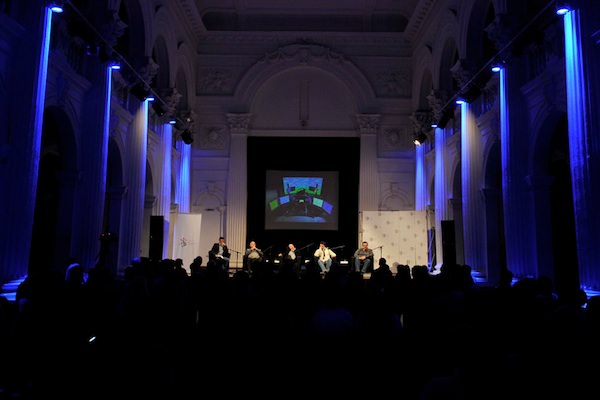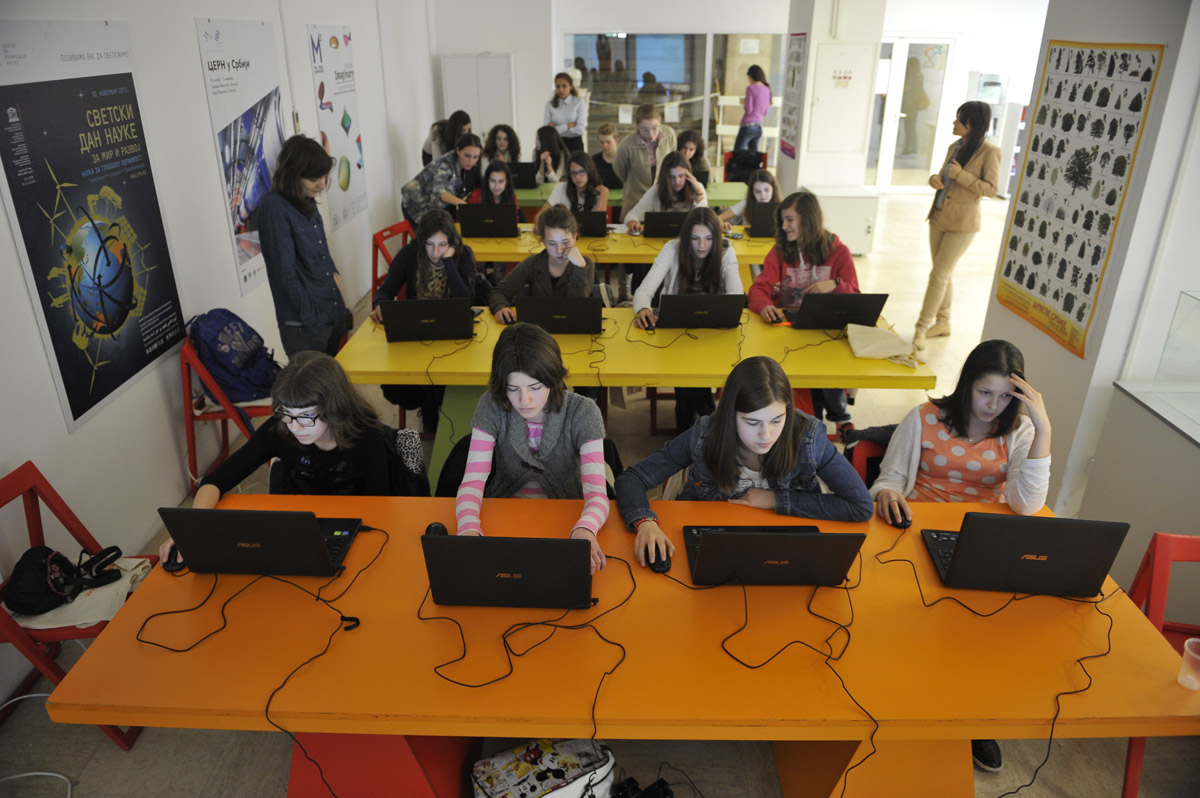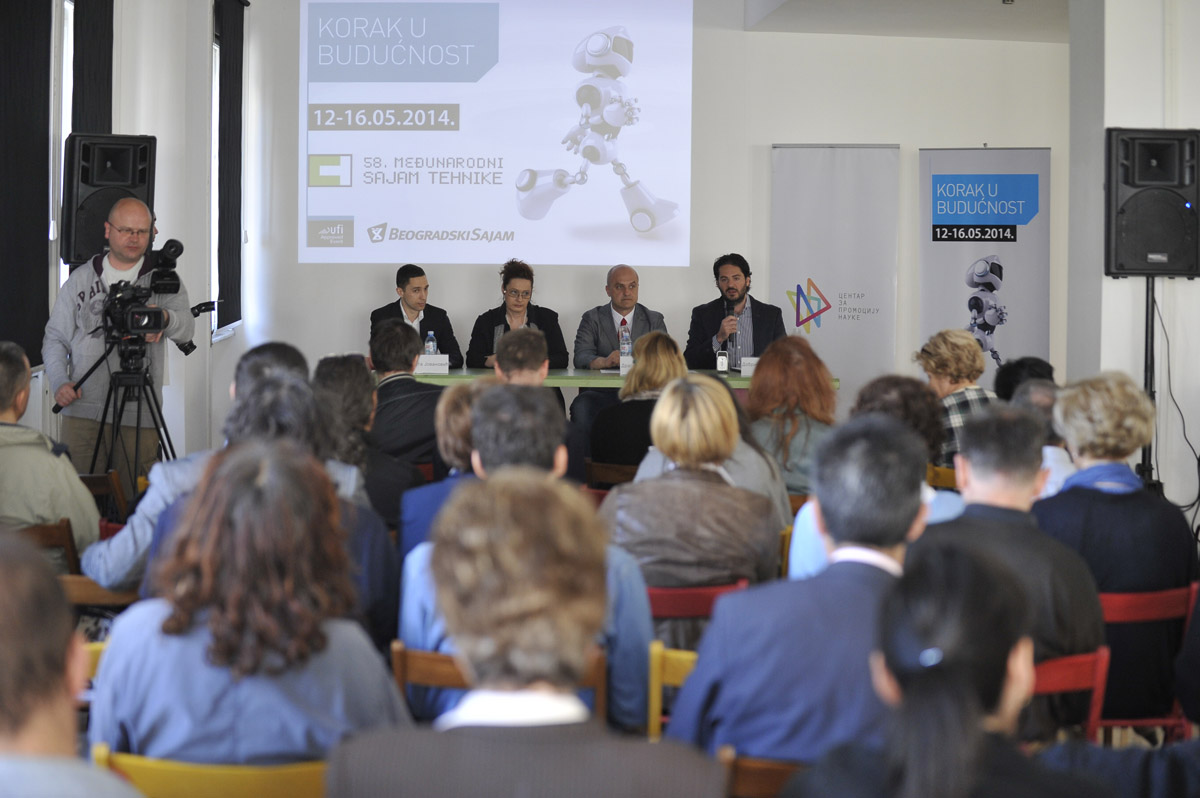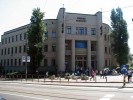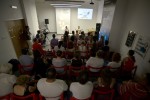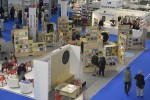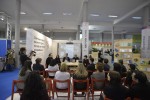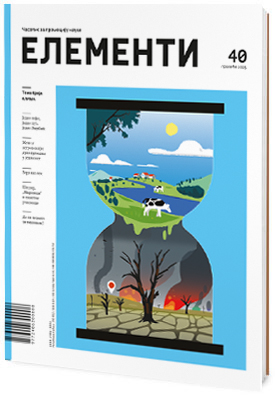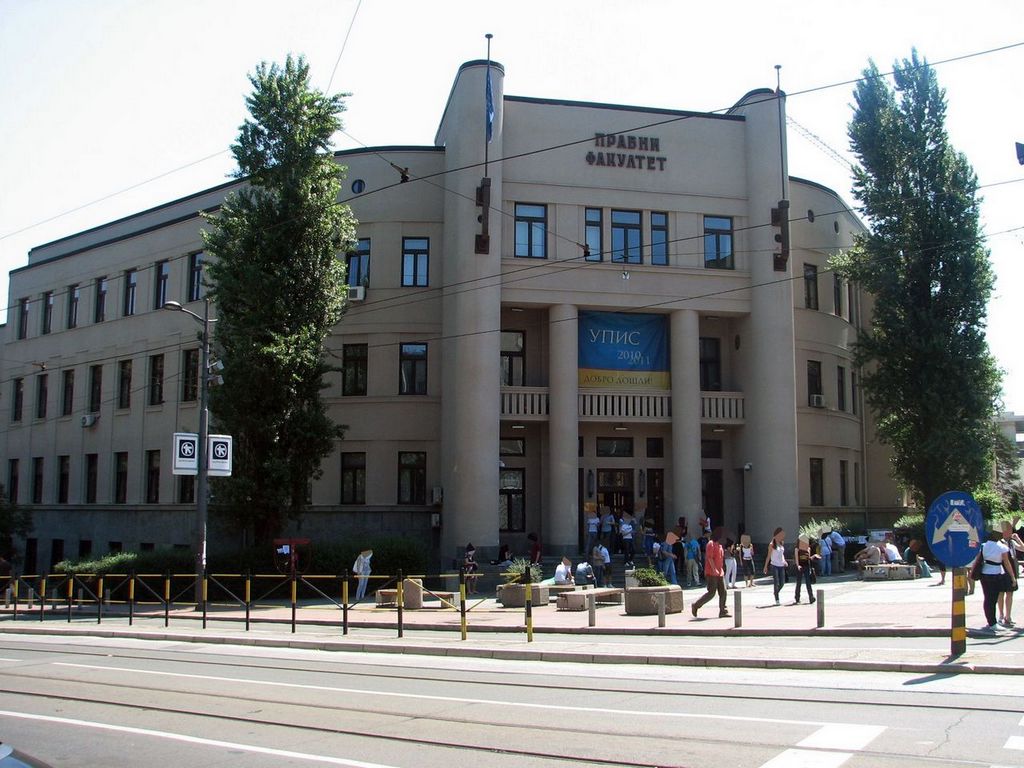CPN organized a panel titled ”Are We Living in a Matrix?” at the Big Hall of the Students’ Cultural Center (SKC), which attracted a large audience with its interesting lecturers and excellent atmosphere.
[:]

Even the enduring rain, could not get in a way of people who wished to know more about this attractive and fascinating idea, which was the topic of the last panel in the series of Wednesday Panels, organized by CPN on Wednesday, April 30. The Big Hall of SKC hosted a panel, and the attendants tried to give answers to a question from a philosophical, psychological, physical and an artistic aspect. And the question was: ”ARE WE LIVING IN A MATRIX?”
The question of simulated reality is becoming an important issue in science, after the work of a French philosopher Jean Bordier (1929-2007), and today it represents one of the most significant scientific and philosophical problems. Although, the majority of the public got familiar with the issue via Hollywood blockbuster ”The Matrix”, directed by Watchowski brothers, the subject of reality as a simulacrum has had a big influence on modern culture and art, for a couple of centuries now. Moreover, with the increase in use of simulations, and not only in science, the idea spread, saying that humanity was, in fact, just a part of one perfect simulation.


The crowded Hall of SKC was a clear indicator that public wants all their questions regarding the matter answered. This time, those questions were about physical reality, which we are a part of, and the answers were provided by the experts on this delicate and stimulating topic, which was the subject of the panel.
Is humanity living in a universe that is just a simulation generated by a supercomputer? Is this just science fiction, or a valid scientific theory? Can scientists generate simulations, which are genuine and detailed enough, and that can even border on reality? PhD Aleksandar Blagojević, from the Institute of Physics, answered these questions patiently. He demystified the issue by using a supercomputer from CERN’s laboratory simulations, which are an essential part of every major experiment.
To help us understand the difference between reality and fiction, and between truth and imagination, Dr. Oliver Tošković, from the Laboratory of Experimental Psychology, included the audience in a sequence of simple demonstrations. This way, he turned their attention to a fine difference between genuine reality, and what is perceived as reality sometimes.


PhD Mašan Bogdanovski, Professor at the Faculty of Philosophy, Belgrade University, guided us through the history of the idea of simulated reality, so, for a brief moment, we even discussed Plato, but also some of the modern thinkers of our era, as well. From a philosophical point of view, he pointed out epistemological traps we can easily get caught in, unless the reality is not analyzed in the way it is supposed to.
A famous writer and a journalist Muharem Bazdulj brought a popular culture perspective. He made a parallel between scientific theories and cultural phenomena, such as ”The Matrix” movie, and he contemplated on the reasons why this idea has such a strong impact on the public at the moment when Watchowski brothers popularized it in movie history.
The audience, evidently interested in the topic, had a lot of questions, and they even discussed some segments among themselves. The questions directed to the speakers were mainly related to sustainability of this theory, as well as the possibility of acquiring answers to who could be the creator of our simulation, in case it really exists. The curiosity even led to one of the newer theories, which states that the universe, in fact, is a hologram. This discussion continued in SKC hallways long after the end of the panel.

